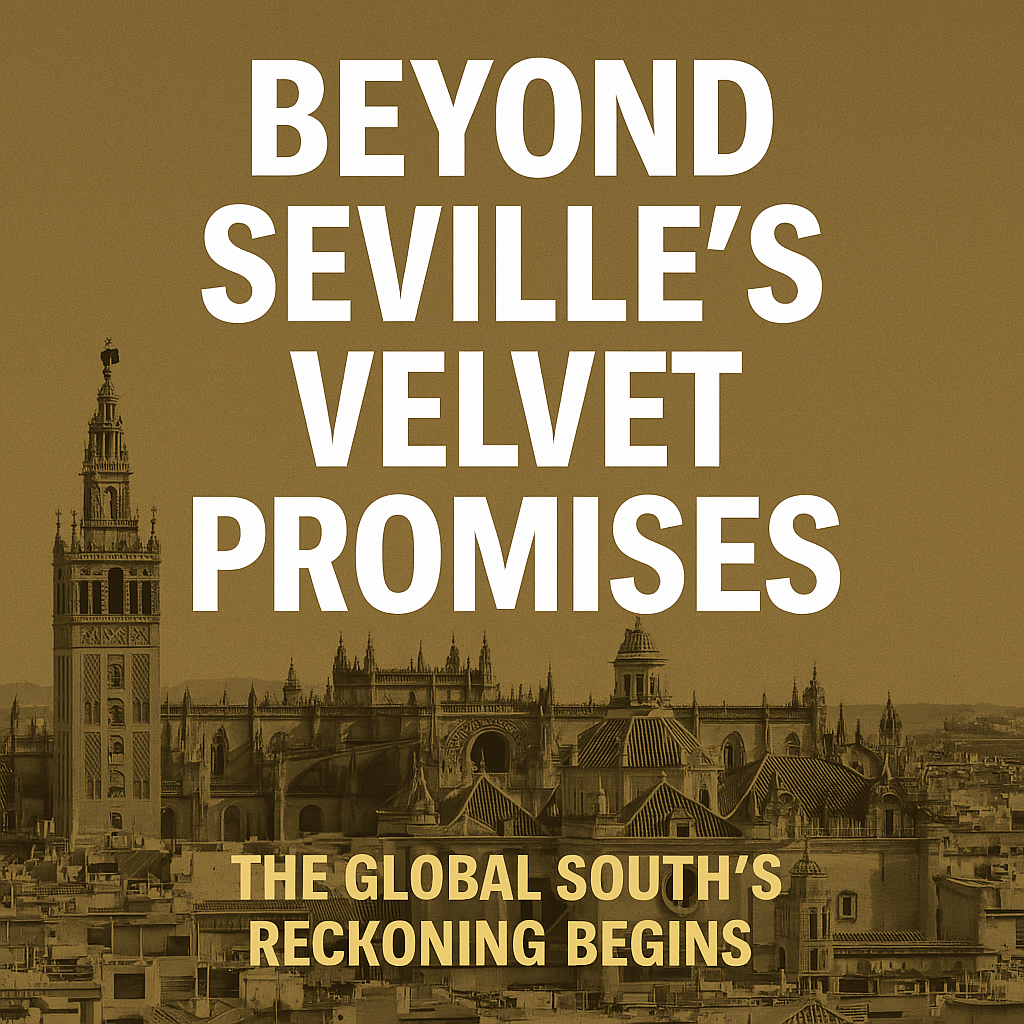By Cheikh Fall – The Third Path Africa

Summary:
This postscript to the Seville Conference critically examines the summit’s rhetorical optimism and unpacks its structural limitations. Anchored in data from global institutions and Southern networks, it calls for bold authorship from the Global South in shaping sovereign financial futures.
I. A Postscript to Choreographed Optimism
Two weeks have passed since the Fourth International Conference on Financing for Development (FfD4) concluded in Seville. Its closing moments—subdued and anticlimactic—stood in sharp contrast to the summit’s grand opening. Initial enthusiasm, rooted in promises to triple multilateral development bank lending, double official development assistance (ODA), and advance fiscal equity, evaporated quickly.
As predicted in our earlier analysis, *Seville: Between Ceremony and Consequence*, the summit replayed familiar dynamics: aspirational declarations outpacing structural design. The slogans were new. But the architecture of financing for development remained deeply unchanged.
This sequel aims not to lament, but to clarify: Seville did not entirely fail—but its outputs confirmed that reform, as ever, depends on enforceable design, not rhetorical flair.
II. Expectations vs. Outcomes: Measuring Seville’s Deliverables
The Compromiso de Sevilla presented an ambitious policy portfolio:
| Expectations | Outcomes |
| Tripling MDB lending | No timeline or binding mechanisms |
| Doubling ODA to least-developed countries | Continued favoritism toward “investment-ready” economies |
| Advancing tax justice through UN-led frameworks | Voluntary guidelines lacking enforceability |
| Climate financing via debt-for-nature swaps | Climate finance proposals disconnected from fiscal systems |
| Inclusion of civil society and youth platforms | Civil society voices diluted in the final agreement |
| Recognition of fragile states’ challenges | Little change in two-track investment paradigm |
The OECD projects bilateral aid to Africa and least-developed countries may fall by up to 28% in 2025. According to the IMF, 12 low-income countries already face acute solvency threats. The World Bank reports private creditors now hold 54% of developing countries’ external public debt. These numbers speak louder than Seville’s promises.
Even the flagship goal of addressing the $4 trillion SDG financing gap leaned heavily on blended finance models. Civil society critiques, including those from economist Daniela Gabor, warned that such de-risking strategies—absent robust co-governance—risk worsening inequality.
III. The Missing Infrastructure of Accountability
Seville did not lack ideas; it lacked an implementation framework. Calls for expanded MDB lending came without new mechanisms to ensure access for fragile or conflict-affected states.
The IMF’s 2025 debt distress bulletin outlines solvency threats in numerous economies, yet only four countries—all in Africa—have undergone restructuring under the G20 Common Framework. UN Secretary-General’s Expert Groups call the system “dysfunctional,” pressing for permanent regional solutions.
Private creditors now dominate sovereign debt markets. Transparency and accountability, while widely discussed, remain aspirational. Meanwhile, feminist economists and youth coalitions—present at pre-conference forums—saw their proposals eroded in final negotiations.
The United States’ withdrawal from final sessions—over disputes tied to climate and gender language—punctuated Seville’s fragility.
IV. Beyond Disappointment: The Strategic Pivot of the Global South
The Global South must pivot from critique to construction:
– Regional Institutions Rising: AfCFTA, ASEAN, and CELAC must transcend symbolism and exercise real economic sovereignty.
– Sovereign Financing Models: The BRICS New Development Bank, Afreximbank, CAF, and emerging climate funds offer pathways to realigned capital flows.
– Infrastructure Sovereignty: AHACTI stands as Africa’s delivery blueprint—continent-led, continent-owned, continent-financed.
– Civil Society as Co-Governors: Advocacy must evolve into authorship—feminist economists, youth groups, and movement builders belong in design rooms.
UNCTAD, Southern Voice, and Global Policy Journal confirm that interest payments now exceed social spending in multiple developing regions. That’s not mismanagement. It’s systemic capture.
V. Conclusion: Seville Was a Mirror—Let Us Be the Architects
Seville did not fail. It revealed the limits of globally steered reform. That revelation is not defeat—it’s mandate.
We now move to:
– Convene a South–South finance summit under AU, CELAC, and ASEAN leadership.
– Operationalize sovereign climate and debt funds.
– Design and deploy statistical and policy institutions that reflect Southern realities.
Visibility alone is no longer enough. The Global South must lead from the front—architecting systems, not observing them. The reckoning begins.